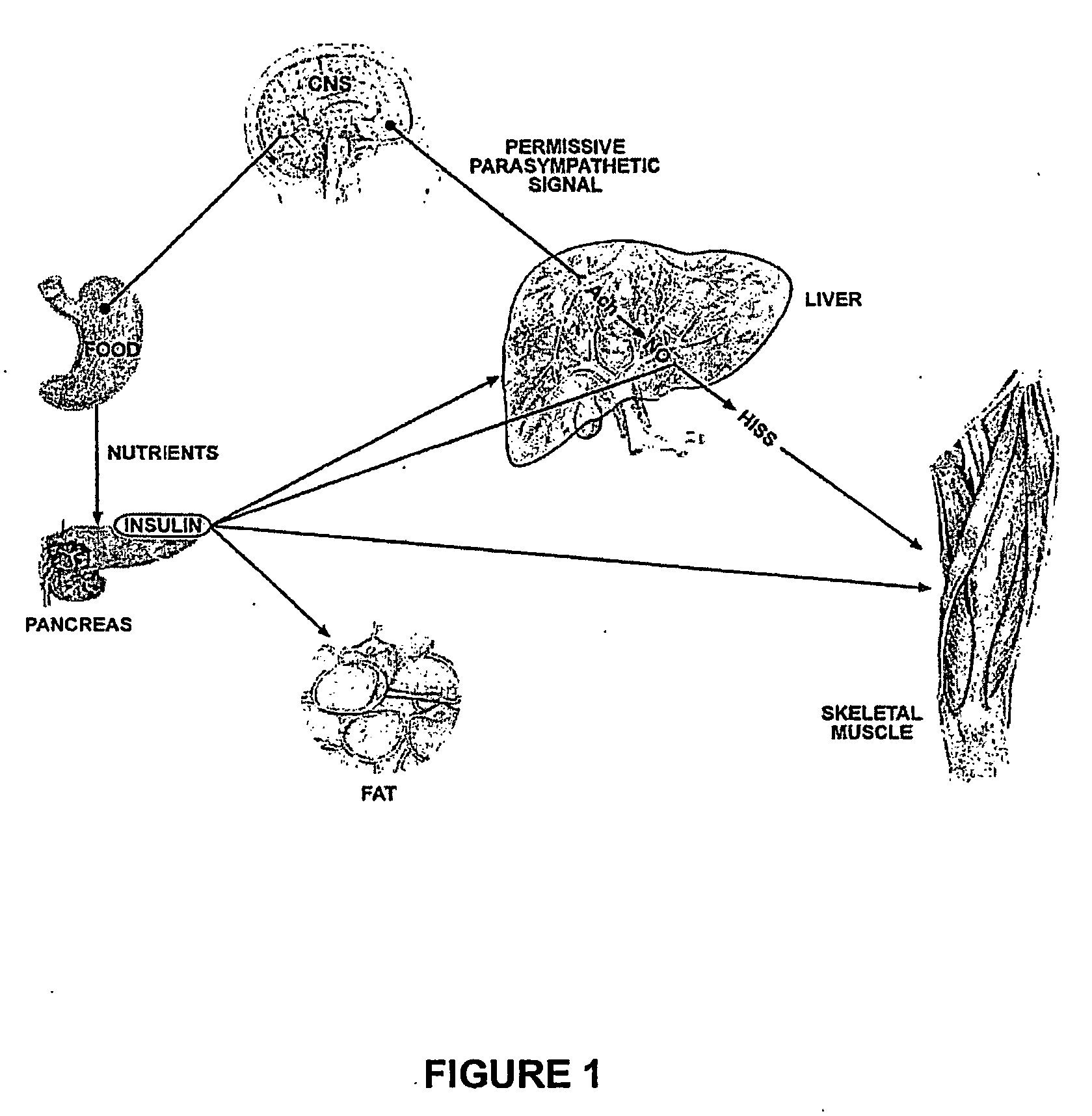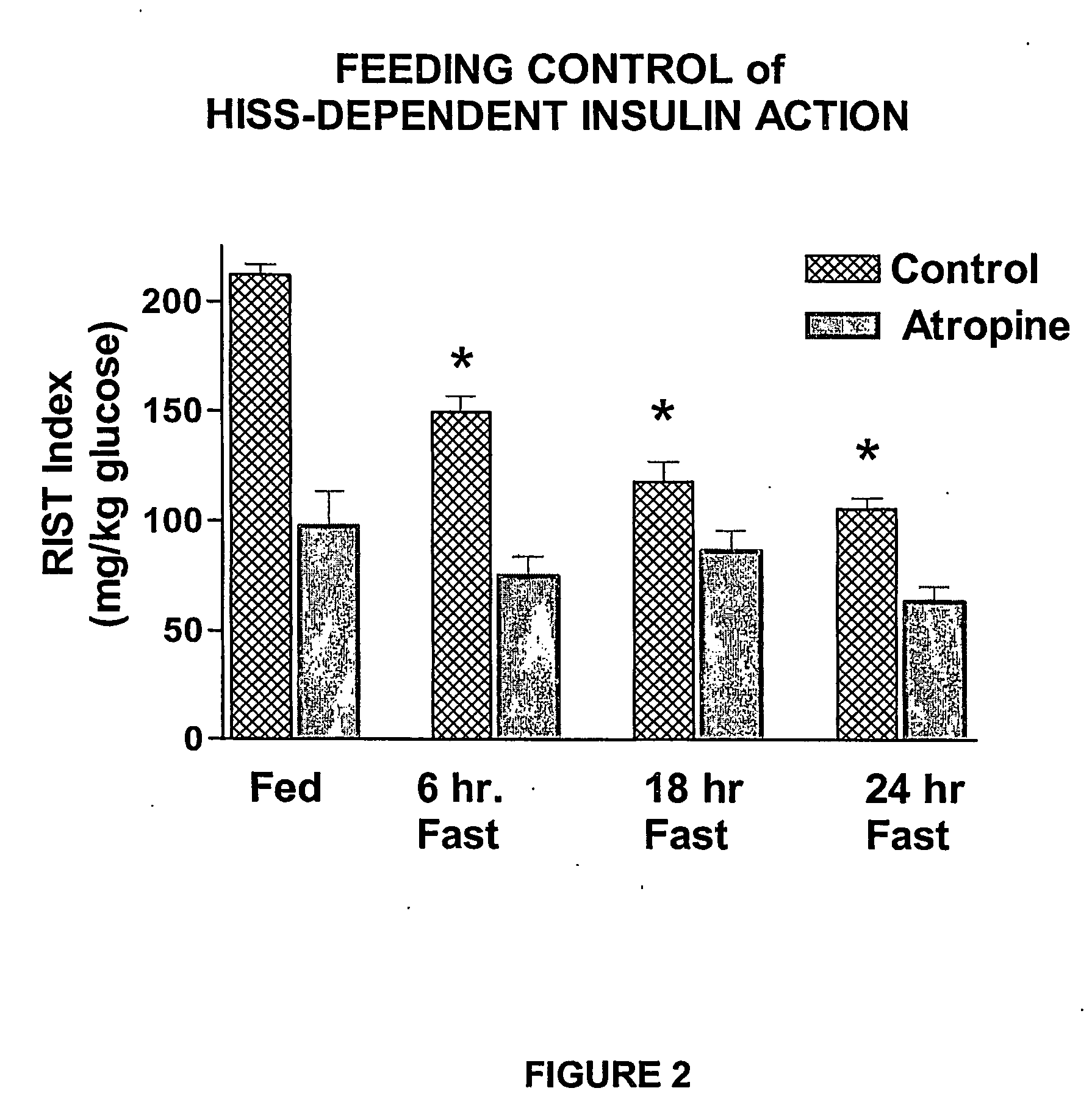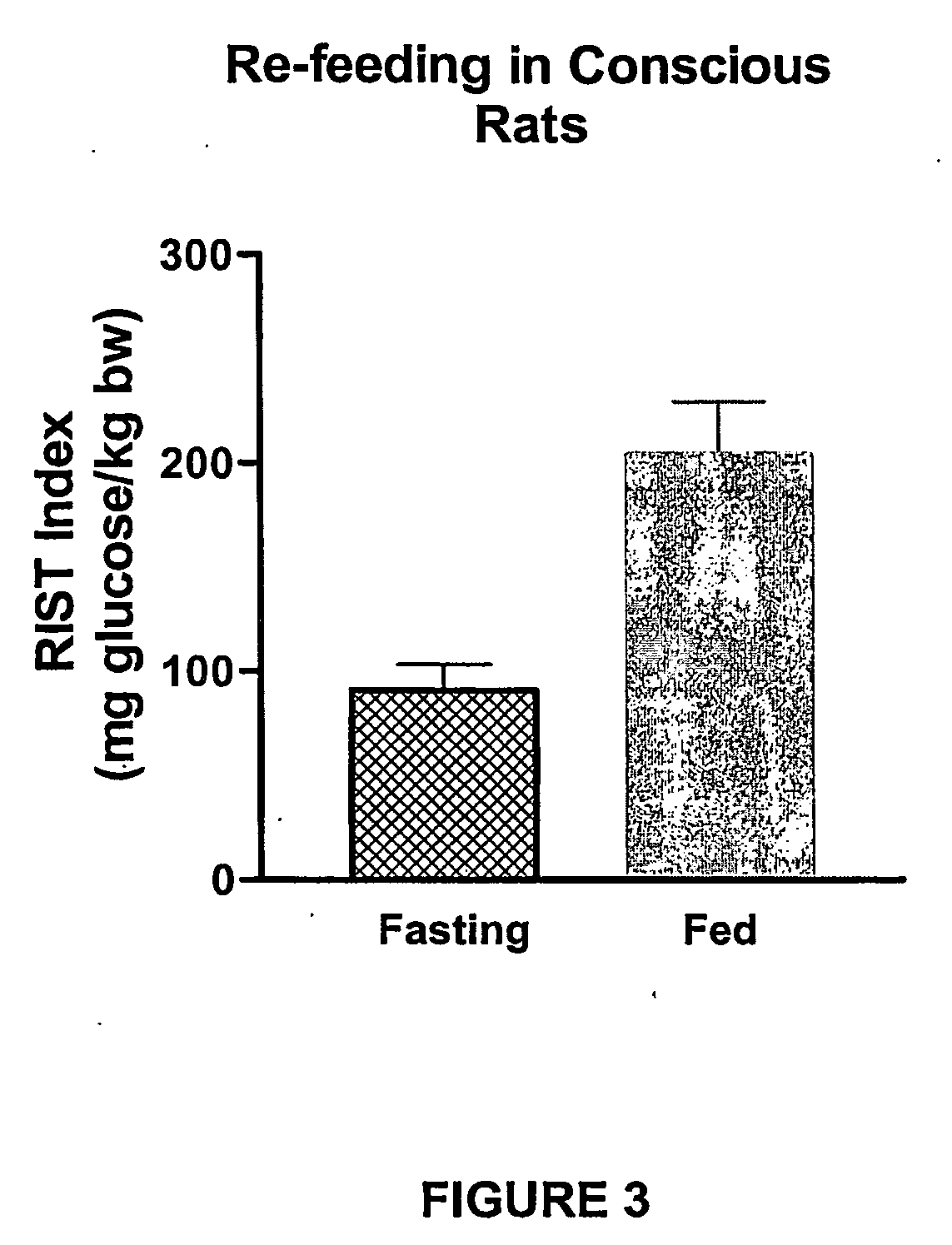Method for diagnosing diabetes type 2 using standardized mixed meal and calculated index values
a mixed meal and index value technology, applied in the field of products and methods for diagnosing metabolic disorders, can solve the problems of poor repeat test reproducibility of oral glucose tolerance test than that of fasting plasma glucose method, failure to elicit the release of hiss, and immediate severe insulin resistan
- Summary
- Abstract
- Description
- Claims
- Application Information
AI Technical Summary
Benefits of technology
Problems solved by technology
Method used
Image
Examples
example one
N OF HISS ACTION IN RATS
[0050] Male Sprague-Dawley rats were catherized and divided into 3 groups and fasted for 6, 18 or 24 hours. The rats were then re-fed with standard rat chow ad libitium. A RIST was then performed by infusing each rat with a 50 mU·kg−1 dose of insulin over a 5 minute period (0.5 mL volume at 0.1 mL·min-1) using an infusion pump (Harvard Apparatus, Millis, Mass.). After 1 minute of infusion, an arterial blood sample was taken to assess blood glucose and a variable glucose infusion (10%) was initiated. Blood samples were then taken every 2 minutes and the glucose infusion rate adjusted to maintain euglycemia. The RIST index is the amount of glucose infused, to maintain euglycemia over the test period that terminated when no further glucose infusion was required (approximately 30-35 min).
[0051] The rats were then treated with atropine (3 mg·kg−1 i.v.) to block HISS release and a second RIST was performed.
[0052] As shown in FIG. 2, the glucose disposal effect of...
example two
AND VALIDATION OF TEST MEAL TO QUANTITATE HISS ACTION IN RATS
[0053] In a fed animal, use of the RIST demonstrates a high sensitivity to insulin that can be reduced by 55% by blocking HISS release. A 24-hour fast in rats results in a RIST index not significantly different from that seen after atropine (which blocks HISS release), thereby indicating that the dramatic decrease in insulin action seen with fasting is due to the decline in HISS action with no significant alteration in the HISS-independent component of insulin action seen after atropine (FIG. 2). Upon re-feeding, insulin action is increased (FIG. 3) (Latour and Lautt, 2002). These observations led to the attempt to utilize a standardized test meal to diagnose the ability of insulin to cause the release of HISS and thereby serve as a method for diagnosing HDIR. This approach proved unfeasible for development in animals owing to the inability of the rats to consistently consume a standard volume of food within a standard per...
example three
ND VALIDATION OF TEST MEAL TO QUANTITATE HISS ACTION IN HUMANS
[0059] Human volunteers were fasted overnight and submitted to a RIST. A stable glycemic baseline level was established by determining three consecutive stable venous glucose concentrations obtained at 5-minute intervals. Once a stable glycemic baseline had been demonstrated, a 50 mU / kg bolus of insulin was intravenously administered and a variable glucose infusion commenced. Arterialized venous glucose concentrations were determined at 2-minute intervals and a variable glucose infusion pump was adjusted to maintain a constant blood glucose level. After completion of the first RIST index, a standardized meal consisting of a wheat-based biscuit containing 50 grams of carbohydrate was consumed within a 10-minute period. Venous glucose measurements were determined at 5-minute intervals until a new stable baseline was obtained whereupon a second RIST was carried out.
[0060]FIG. 5 shows the dynamic RIST, which represents the a...
PUM
 Login to View More
Login to View More Abstract
Description
Claims
Application Information
 Login to View More
Login to View More - R&D
- Intellectual Property
- Life Sciences
- Materials
- Tech Scout
- Unparalleled Data Quality
- Higher Quality Content
- 60% Fewer Hallucinations
Browse by: Latest US Patents, China's latest patents, Technical Efficacy Thesaurus, Application Domain, Technology Topic, Popular Technical Reports.
© 2025 PatSnap. All rights reserved.Legal|Privacy policy|Modern Slavery Act Transparency Statement|Sitemap|About US| Contact US: help@patsnap.com



